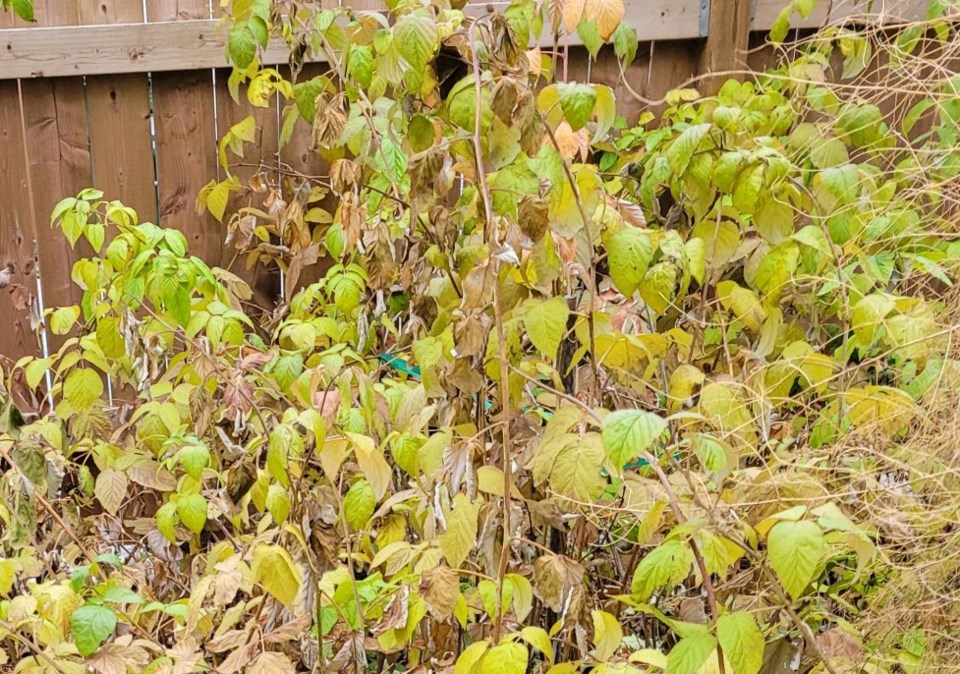Here are some strategies to ensure winter damage is limited in your garden.
Pay attention to hardiness zone details when you buy your plants. Good nurseries will list the hardiness zones for a particular variety on their websites and the plant labels. Go to the following website and discover which hardiness zone you live in: https://planthardiness.gc.ca/. If you live in a city and have good wind protection, it is sometimes possible to grow a plant that needs a zone warmer than that in which you live. If the hardiness zone map shows you are in zone three (like much of Saskatchewan), you might get away with planting a zone 4 plant as long as you pay close attention to details.
Local nurseries are usually better than big box stores for carrying hardy varieties. Big box stores often make decisions for all their stores across Canada and will include plants that can’t possibly survive in your location. Every year, I check one of the largest chain stores that has a garden centre, and in the 25 years I have lived in Saskatoon, they have seldom sold an apple variety that could survive here. They also sell blueberries, which require very acidic soil. Yet Saskatchewan soils are alkaline. Sometimes, the trees they sell are labeled with hardiness zones, that show you should not be growing them!
When your first frost occurs in the fall, take a careful look at what your plants are doing. If they are still developing new leaves, that is an almost certain sign that winter damage will occur, especially if very cold temperatures happen soon. If all the leaves are still green and not showing signs of dropping, that could be another indication of insufficient dormancy. Plants need to go dormant to withstand winter temperatures. Cultural practices that could lead to poor survival include giving plants too much fertilizer in late summer, pruning plants heavily in late summer, not watering them enough during the summer and then suddenly giving them water in the fall or planting them in a warm location such as the south side of a house.
But sometimes, it’s not your fault at all. Fluctuating cold and warm temperatures can cause some plants to wake up or partially wake up and begin new growth in the fall, leading to damage. Also, after a dry summer followed by rain in the fall, plants may be damaged in the winter. There are exceptions: grapes and raspberries continue to produce new leaves even into the fall. These plants usually show some tip kill even if they are considered hardy.
Good gardeners can be very good at inadvertently killing borderline hardy plants when they pay attention to details like watering, fertilizing, weeding and pruning. Yet all these activities, if done in excess, could cause plants to keep growing longer into the fall. Years ago, before the University of Saskatchewan Romance series of cherries came on the market, many people were growing the ‘Evans’ cherry. One year, many gardeners complained that their ‘Evans’ had died. When questioned, it sounded like these gardeners had really pampered their trees and I couldn't figure out what they had done wrong. Then I met a gardener who had had great success with their ‘Evans’. I even visited the yard and looked at the tree. What was most remarkable was they did nothing to “help” the tree. Grass was growing up to the trunk, they never pruned or fertilized the tree and everything was fine. I don't recommend letting grass grow near the trunk in the early years of a plant’s life as this can greatly stunt them. But once the plant starts coming into good production (be it fruit or flowers), it's okay to allow grass closer to the trucks. The added grass will use up some nutrients and water in the fall which tends to cause the plant to go dormant quicker.
Bob Bors, recently retired from the University of Saskatchewan, is the co-author of 'Growing Fruit in Northern Gardens'.
This column is provided courtesy of the Saskatchewan Perennial Society (SPS; [email protected]). Check out our website (www.saskperennial.ca) or Facebook page (www.facebook.com/saskperennial).




